From organizing content with precision to designing intuitive navigation systems, we empower your digital presence to captivate and retain users effortlessly.

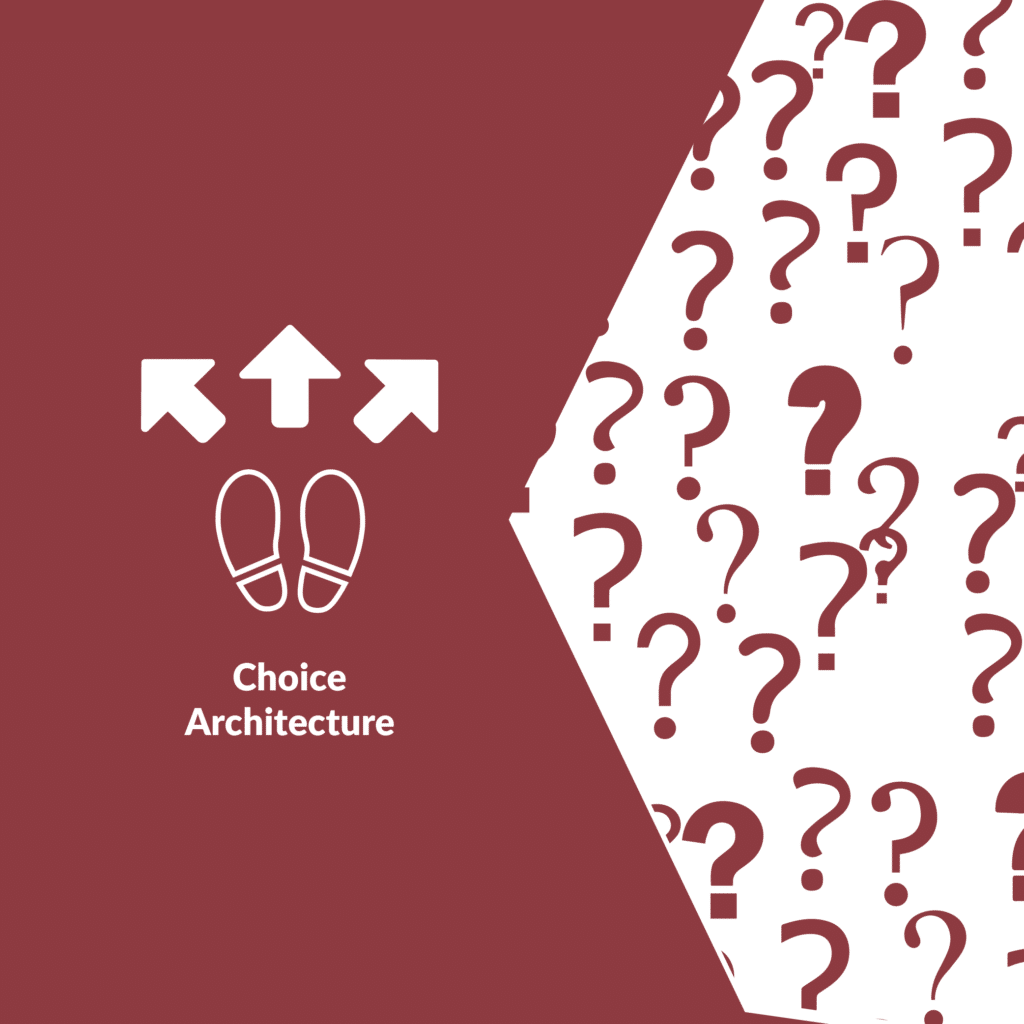
What is Choice Architecture?
Choice architecture, often associated with the concept of “nudge,” involves shaping decision-making by organizing decision contexts. Coined by Thaler and Sunstein in 2008, it influences choices without restricting options, as exemplified in layout designs such as food courts, strategically positioning healthier options to encourage better decisions.
Why Incorporate Choice Architecture?
Incorporate Choice Architecture to empower decision-making. Strategically design options to subtly guide user choices, enhancing experiences and achieving desired outcomes. Respect individual freedom while influencing decisions effectively for improved user engagement and satisfaction.

Cultivate Strategic Decision-Making and Achieve Desired Outcomes Effectively with Our Tailor-Made Solutions.
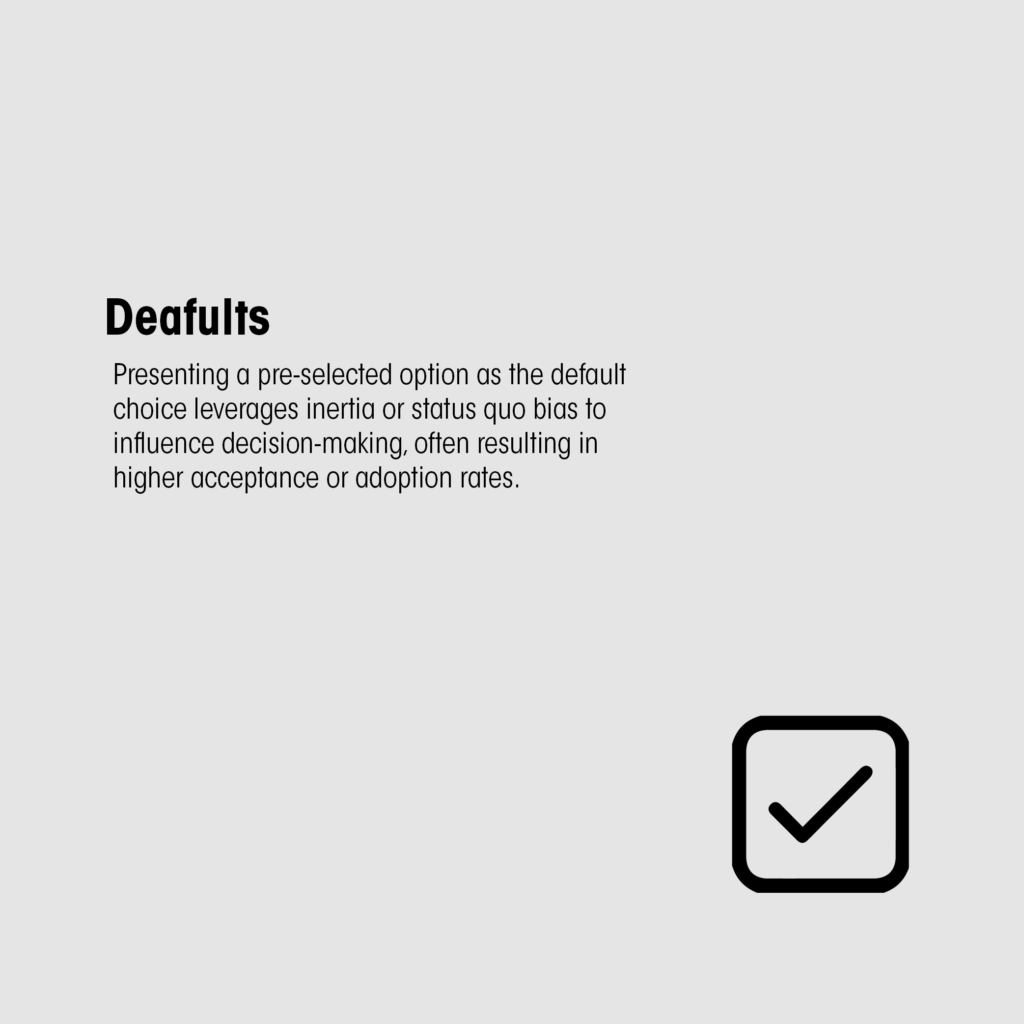
Presenting a pre-selected option as the default choice, which influences decision-making due to inertia or status quo bias.
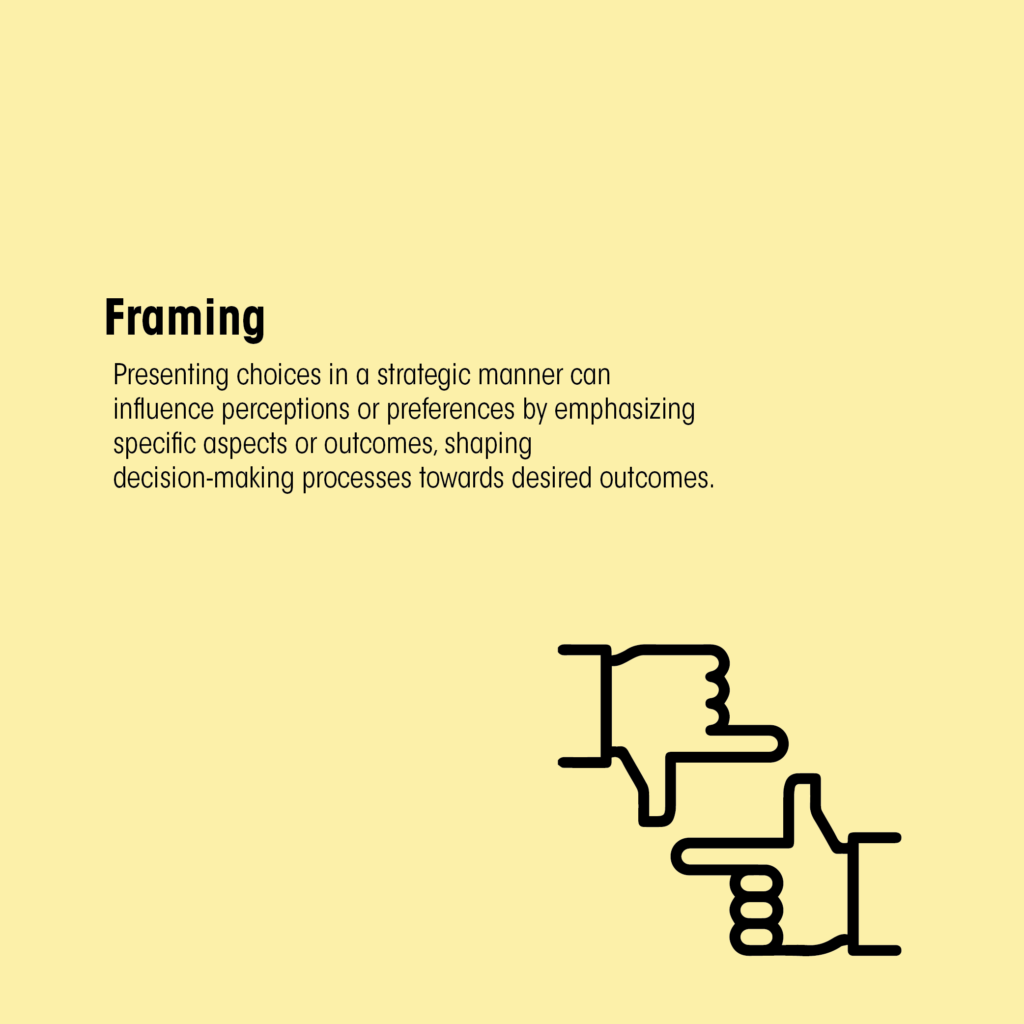
Presenting choices in a way that influences perceptions or preferences, often by highlighting certain aspects or outcomes.
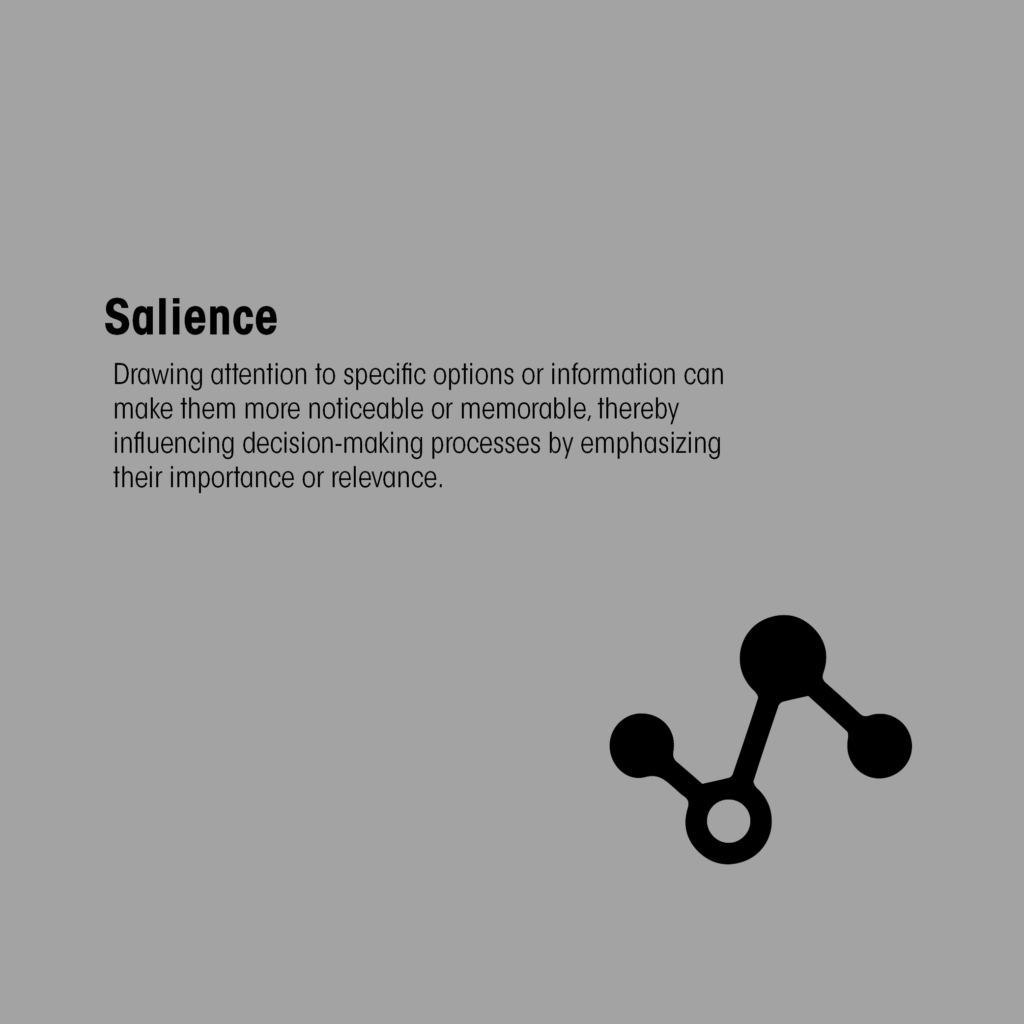
Drawing attention to specific options or information to make them more noticeable or memorable, influencing decision-making.
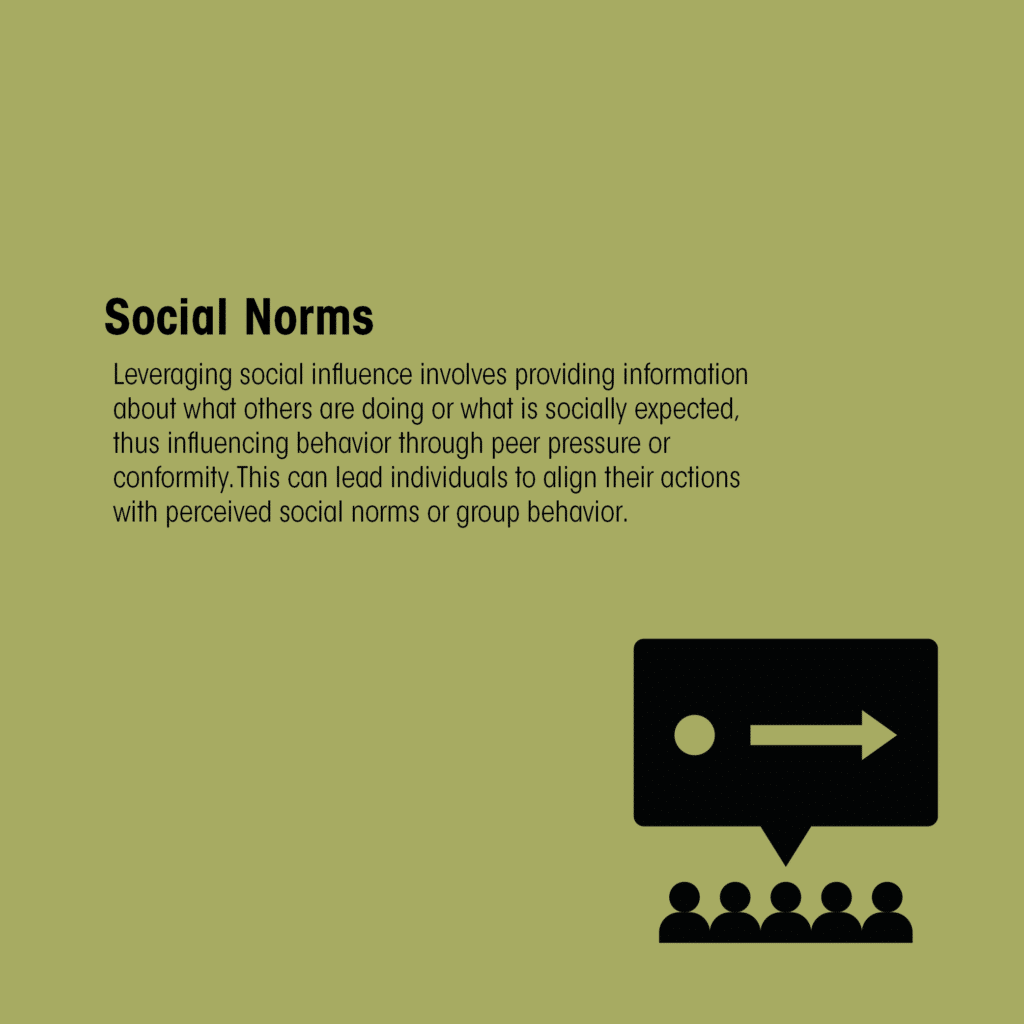
Leveraging social influence by providing information about what others are doing or what is socially expected, influencing behavior through peer pressure or conformity.
By influencing consumer behavior, businesses can increase sales, improve customer satisfaction, and achieve their marketing objectives more effectively.
Choice architecture can simplify decision-making processes for consumers, leading to more informed choices and potentially better outcomes that align with their preferences and values.
Encourage desirable behaviors, promote healthier lifestyles, and increase participation in public programs.
Enhance donation behavior, volunteer participation, and support for causes.
Improve learning outcomes by structuring environments to facilitate student engagement and academic success.
Encourage healthier lifestyle choices, improve patient compliance with treatment plans, and enhance overall healthcare outcomes.
Imagine effortlessly navigating through a website, finding exactly what you need without frustration, just like strolling through a well-organized store.
Picture accessing a website where every piece of information is intuitively categorized and easily accessible, just like finding your favorite book in a well-organized library.
Does your website lack customization to meet the demands of Accessibility and Inclusivity Design, hindering equal access for all users?
Not right for you?
Don’t worry, we have many ways to help you and your business

Crafting user-centric interfaces and experiences for websites and applications to enhance usability and engagement.

Organizing and structuring content in a logical and intuitive manner to facilitate user navigation and understanding.

Implementing equitable access solutions for inclusive digital experiences that empower users of all abilities.

From Information to Choice Architecture: Crafting dynamic and visually stunning websites tailored to your brand’s identity and user needs for a seamless online experience.
Choice architecture refers to the strategic design of choices to influence decision-making without restricting options. It can impact decisions by subtly guiding individuals towards certain choices while preserving their freedom to choose.
Choice architecture benefits businesses by optimizing product displays, pricing structures, and marketing messages to influence consumer behavior positively. This can lead to increased sales, improved customer satisfaction, and enhanced brand loyalty.
Yes, ethical considerations are crucial. Choice architecture should aim to empower individuals to make informed decisions aligned with their preferences and values. Transparency, respect for autonomy, and avoiding manipulation are essential principles to uphold.
Certainly! Examples include default settings on software interfaces, pricing strategies like decoy pricing, and social proof elements such as customer reviews. These subtle design choices influence decisions in various contexts, from online shopping to healthcare choices.
Choice architecture can encourage sustainable behaviors like recycling or energy conservation through prompts, feedback mechanisms, and incentives. It can also promote charitable giving, volunteering, and community engagement by framing options in socially beneficial ways.
Choice architecture can be customized to suit different contexts, target audiences, and objectives. Tailoring design elements such as defaults, framing, salience, and social norms allows for the creation of effective choice architectures that resonate with specific needs and preferences.
Past tense. past participle.
Courted and successfully matched
“These clients were Cordeeped”
We’re here to continually court our clients, because we’re in it for the long run.
